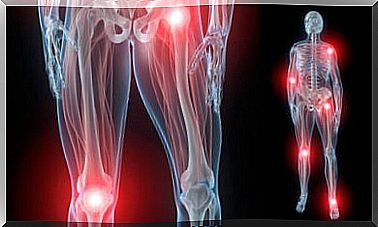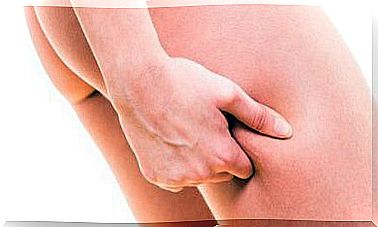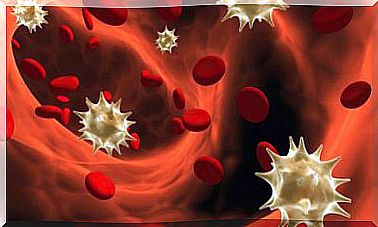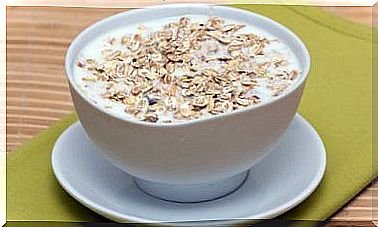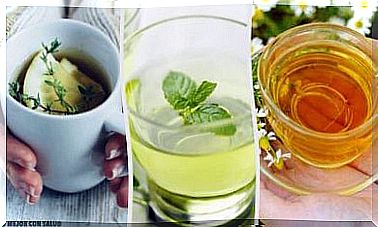3 Herbal Remedies To Treat Tennis Elbow
Tennis elbow usually occurs as a result of repetitive movements of the forearm or wrist. It causes inflammation and pain. Here are the herbal remedies that can help treat this condition.

Tennis elbow is a condition that occurs when the tendons in the elbow are affected. The main cause of this problem is repetition in wrist and arm movements. To treat tennis elbow, the specialist often prescribes medications that relieve inflammation and pain.
In addition, in more severe cases, it is possible to resort to surgery. However, there are a few alternatives with herbal remedies that can help alleviate this condition. In this article, we share 3 herbal remedies that may be effective in reducing discomfort.
What is tennis elbow or the tennis player’s elbow?
Although it is more common in athletes, tennis elbow or epicondylitis is, in fact, an injury that can affect any individual who performs repetitive movements of the forearm and wrist. For example, it can affect people who work in painting, construction, butchery, etc.
Tennis elbow is characterized by pain in the outer part of the elbow, also known as the epicondyle. As for its symptoms, a Mayo Clinic post suggests that the pain and weakness could make the following tasks difficult:
- Shake hands or hold an object.
- Turn the handle of a door.
- Hold a cup of coffee.
Herbal remedies to treat tennis elbow
As we mentioned, there are some herbal remedies that might help treat tennis player’s elbow naturally. However, it is best to take them under medical supervision as some of them may have contraindications or interact with medications.
1. Turmeric
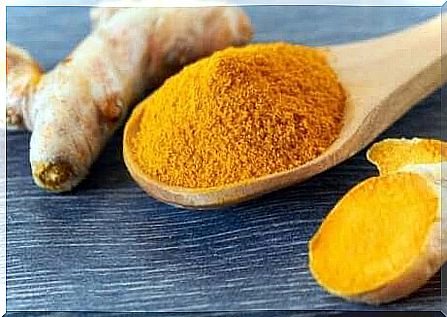
The first option we offer is turmeric, an ancestral natural remedy that is increasingly recommended in alternative medicine for various ailments that lead to pain and inflammation. This is thanks to the properties of its active ingredient, curcumin, which also has antioxidant effects.
In this regard, an article published in the journal Foods indicates that this component would be effective in treating inflammation and muscle pain due to exercise. It would therefore improve the recovery and subsequent performance of active people.
Turmeric can be consumed in the form of spices in any recipe, both sweet and savory. Besides, it also works very well as a natural dye. One of the most popular preparations in recent years is golden milk.
The basic ingredients are milk (cow or vegetable) and turmeric. You can also add other spices such as cinnamon, cardamom, ginger, cumin, etc. We walk you through the recipe steps below.
Ingredients:
- 2 cups of milk of your choice (250 ml).
- 1 teaspoon of powdered turmeric (10 grams).
- 1/2 teaspoon ground cinnamon (5 grams).
- Honey (optional).
Preparation:
- Pour the milk into a saucepan and heat it over medium heat.
- Then add the turmeric and cinnamon and stir.
- Leave to cook for 3 minutes without boiling.
- If you wish, you can sweeten it with honey.
- Then enjoy this hot drink.
2. Ginger
Second, this other spice from the same family as turmeric is ginger. The rhizome of this plant stands out as a natural anti-inflammatory. Indeed, according to a study by The Journal of Pain, consuming 2 grams of ginger per day for 11 days decreases muscle pain in people who perform movements with the elbows.
To get the most of its effects, you can mix the consumption of fresh ginger (in juice or infusions), with the topical application of its essential oil. Remember that the latter must be diluted in a vegetable oil serving as a base (coconut, olive or almond oil). Now here is the recipe for a ginger infusion.
Ingredients:
- 1 cup of water (250 ml)
- 2 small slices of fresh ginger
- Honey (optional)
Preparation:
- Heat the water over medium heat.
- When it begins to boil, add the pieces of ginger then turn off the heat.
- Then let sit for 10 minutes and serve.
- Sweeten with honey if you wish.
3. Cat’s claw
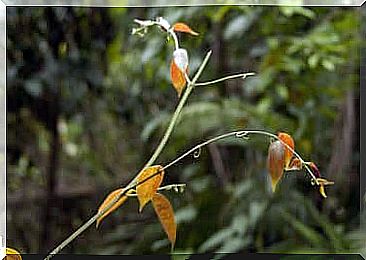
Cat’s claw is the name given to the Uncaria tomentosa plant , native to the Amazon region. This plant is known for its health benefits, including anti-inflammatory and anti-tumor properties.
Although there is no scientific evidence for its effects in tennis elbow, an article published in Complementary Therapies in Clinical Practice indicates that its consumption helps reduce inflammation and relieve pain in individuals with arthritis. rheumatoid.
Regarding its ingestion, it is advisable to take cat’s claw as a supplement. This makes it easier to control the dose. Because, although side effects are rare, the plant’s high levels of tannins could lead to nausea, upset stomach, and diarrhea.
Now that you know the benefits of these herbal remedies for naturally treating tennis elbow, don’t hesitate to include them in your daily routine if you have them. If you ingest them regularly, it is indeed very likely that you will notice improvement in pain and inflammation.
Nevertheless, it is necessary to clarify that the diagnosis and medical treatment should not be neglected, Therefore, if the pain persists or other symptoms appear, we recommend that you consult a professional.
